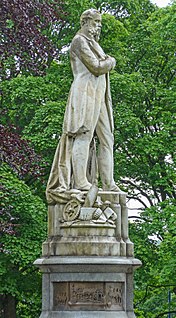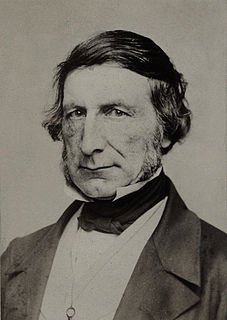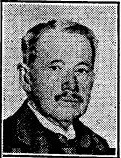Holland baronets, of Westwell Manor (1917)
- Sir (Alfred Reginald) Sothern Holland, 1st Baronet (1876–1948)
- Sir Jim Sothern Holland, 2nd Baronet (1911–1981)
- Sir Guy Hope Holland, 3rd Baronet (1918–1997)
 |
|
There have been four baronetcies created for persons with the surname Holland, one in the Baronetage of England and three in the Baronetage of the United Kingdom.
The Holland Baronetcy, of Quiddenham in the County of Norfolk, was created in the Baronetage of England on 15 June 1629 for John Holland. [1] He represented Norfolk, Castle Rising and Aldborough in the House of Commons. The second Baronet sat as Member of Parliament for Norfolk. The title became extinct on the death of the third Baronet in 1729.
The Holland, later Holland-Hibbert Baronetcy, of Sandlebridge in the County of Chester, was created in the Baronetage of the United Kingdom on 10 May 1853. For more information on this creation, see the Viscount Knutsford.
The Holland Baronetcy, of Broughton in the County of Lancaster, was created in the Baronetage of the United Kingdom on 18 July 1907. For more information on this creation, see the Baron Rotherham.
The Holland Baronetcy, of Westwell Manor in the County of Oxford, was created in the Baronetage of the United Kingdom on 17 February 1917 for Sothern Holland. He was Trade Commissioner to South Africa from 1908 to 1914 and Director-General of Inspection of Munitions in 1916. The title became extinct on the death of the third Baronet in 1997.
 |
|

Viscount Knutsford, of Knutsford in the County Palatine of Chester, is a title in the Peerage of the United Kingdom.

Viscount De L'Isle, of Penshurst in the County of Kent, is a title in the Peerage of the United Kingdom. It was created in 1956 for William Sidney, 6th Baron de L'Isle and Dudley, VC, KG, GCMG, GCVO (1909–1991).

Baron Milford is a title that has been created three times, once in the Peerage of Ireland and twice in the Peerage of the United Kingdom. All three creations have been for members of the same family. The first creation came in the Peerage of Ireland in 1776 when Sir Richard Philipps, 7th Baronet, of Picton Castle was made Baron Milford. However, this title became extinct on his death in 1823, while the baronetcy was passed on to a distant relative. The title was revived in the Peerage of the United Kingdom in 1847 when Sir Richard Philipps, 1st Baronet, of Picton Castle was created Baron Milford, of Picton Castle in the County of Pembroke. Born Richard Bulkeley Philipps Grant, he was the son of John Grant and Mary Philippa Artemisia, daughter of James Child and Mary Philippa Artemisia, daughter of Bulkeley Philipps, uncle of the first Baron of the first creation. He succeeded to the Philipps estates in 1823 and assumed the surname of Philipps the same year. In 1828 he was created a Baronet, of Picton Castle in the County of Pembroke, in the Baronetage of the United Kingdom. However, Lord Milford was childless and the titles became extinct on his death in 1857. He devised his estates to his half-brother Reverend James Henry Alexander Gwyther, who assumed the surname of Philipps. James's daughter Mary Philippa married Charles Edward Gregg Fisher, who assumed the surname of Philipps and was created a Baronet, of Picton, in 1887.

There have been seven baronetcies created for members of the Lowther family, one in the Baronetage of Nova Scotia, two in the Baronetage of England, two in the Baronetage of Great Britain and two in the Baronetage of the United Kingdom. Two of the creations are extant as of 2008.

Baron Masham is a title that has been created three times, once in the Peerage of Great Britain and twice in the Peerage of the United Kingdom. It was first created in the Peerage of Great Britain in 1712 when the courtier Samuel Masham was made Baron Masham, of Otes. In 1723 he also succeeded as fourth Baronet of High Lever. The barony became extinct on the death of the second Baron in 1776. The Masham baronetcy, of High Lever in the County of Essex, was created by James I in the Baronetage of England on 20 December 1621 for Samuel Masham. The third Baronet was Member of Parliament for Essex. The baronetcy became extinct along with the barony in 1776.
Baron Wenlock is a title that has been created three times, once in the Peerage of England and twice in the Peerage of the United Kingdom. The first creation came in 1461 when the soldier Sir John Wenlock was summoned to Parliament as Lord Wenlock. However, he was childless and on his death in 1471 the title became extinct.

There have been three baronetcies created for people with the surname Hood, one in the Baronetage of Great Britain and two in the Baronetage of the United Kingdom. The first Baronet of the first creation was made Viscount Hood, while the fourth Baronet of the second creation was made Baron St Audries.

There have been five baronetcies created for people with the surname Pollock, one in the Baronetage of Nova Scotia and four in the Baronetage of the United Kingdom. As of 2017 three of the creations are extant. These three creations derive from the same family to which the 1703 baronetcy was granted; the Pollock ancestor of Sir Frederick Pollock, 1st Baronet and Sir George Pollock, 1st Baronet married his cousin, daughter of Sir Robert Pollock, 2nd Baronet.

There have been seven Baronetcies created for persons with the surname Lewis, two in the Baronetage of England and five in the Baronetage of the United Kingdom. Only one creation is extant as of 2010.
There have been four baronetcies created for members of the Astley family, three in the Baronetage of England and one in the Baronetage of the United Kingdom. Only one creation is extant as of 2008. The Astley family were descended from Sir Thomas de Astley of Astley, Warwickshire, who was killed in the Battle of Evesham in 1265. He married twice. From his first marriage to Joane de Blois descended the Astley baronets of Patshull, whose family seat was at Patshull Hall, Staffordshire, and the Astley baronets of Everley, Wiltshire. From his second marriage to Editha Constable of Melton Constable, Norfolk, descended the Astley baronets of Melton Constable, the Astley baronets of Hillmorton, and the Barons Astley of Reading.

There have been three baronetcies created for people with the surname Benn, all in the Baronetage of the United Kingdom. As of 2014 one creation is extant.
There have been two baronetcies created for people with the surname Jenkinson, both in the Baronetage of England. The seventh holder of the first creation was elevated to the peerage as Earl of Liverpool in 1796, a title which became extinct in 1851.
There have been four baronetcies created for people with the surname Samuel, all in the Baronetage of the United Kingdom. Two of the titles are still extant.
There have been nine baronetcies created for persons with the surname Lloyd, three in the Baronetage of England, three in the Baronetage of Great Britain and three in the Baronetage of the United Kingdom. Two of the creations are extant as of 2010.
There have been five baronetcies created for persons with the surname Hill, one in the Baronetage of Nova Scotia, one in the Baronetage of Great Britain, one in the Baronetage of Ireland and two in the Baronetage of the United Kingdom. Three of the creations are extant as of 2008.

There have been seventeen baronetcies for persons with the surname Stewart, ten in the Baronetage of Nova Scotia, one in the Baronetage of Ireland and six in the Baronetage of the United Kingdom. See also Steuart baronets, Henderson-Stewart baronets, MacTaggart-Stewart baronets and Stewart-Clark baronets.
There have been five baronetcies created for persons with the surname Fraser, one in the Baronetage of Nova Scotia and four in the Baronetage of the United Kingdom. As of 2007 four of the creations are extinct while one is extant.
There have been eight baronetcies created for persons with the surname Graham, two in the Baronetage of Nova Scotia, two in the Baronetage of England, one in the Baronetage of Great Britain and three in the Baronetage of the United Kingdom.

There have been six baronetcies created with the surname of Leigh: two in the Baronetage of England, one in the Baronetage of Ireland, one in the Baronetage of Great Britain and two in the Baronetage of the United Kingdom. The only creation remaining extant is that of Altrincham, while another is dormant.

There have been four baronetcies created for members of the Welsh Philipps family, one in the Baronetage of England and three in the Baronetage of the United Kingdom.